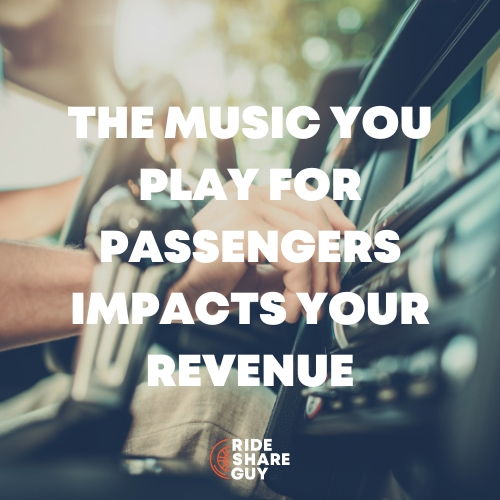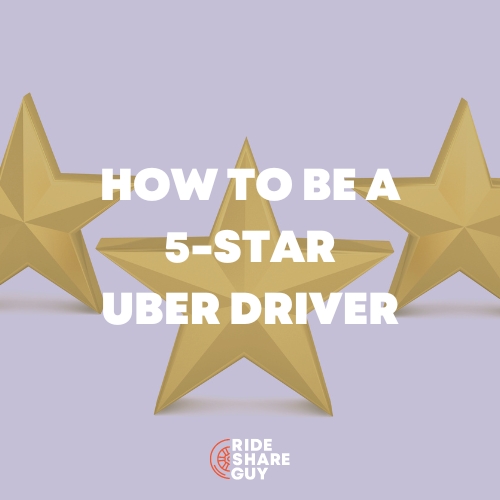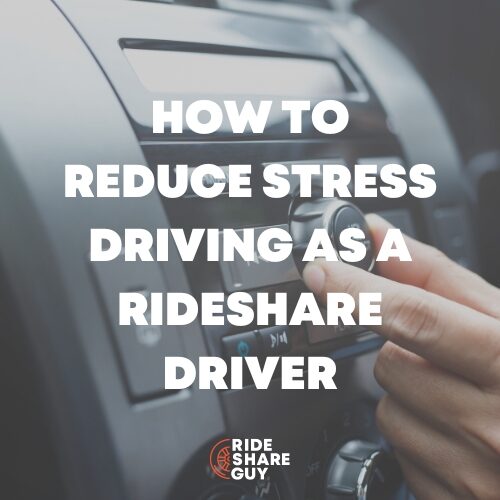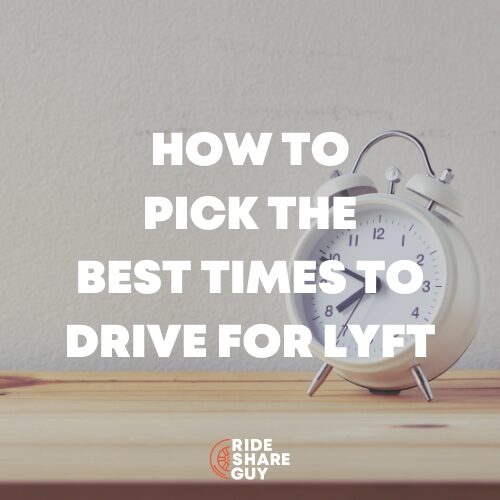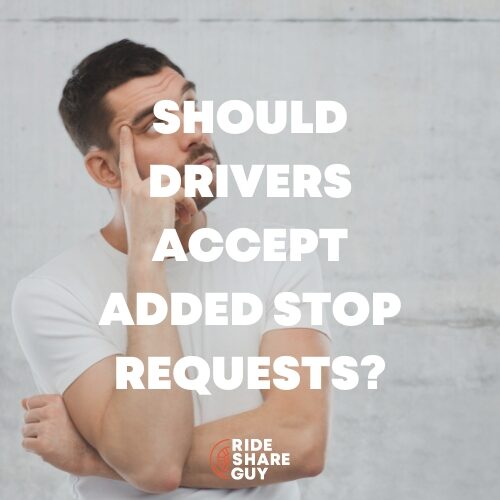What are you most interested in achieving as an Uber driver? For most of us, it’s money.
While it’s true that I love the passengers, sunrises and sunsets behind the wheel, and my favorite Starbucks order, my ultimate goal as an Uber and Lyft driver is to make extra money.
How do you earn more money as an Uber driver? After seven years and over 28,000 rides, here are my top strategies for making more money with Uber.
Top 10 Best Ways to Make More Money with Uber
- Plan Your Day Around Bonuses
- Only Accept Profitable Rides
- Be Friendly
- Add Extra Touches
- Use Uber and Lyft At the Same Time
- Deliver for Uber Eats
- Invite Your Friends
- Track Your Expenses
- Pump the Brakes
- Map Out Bathrooms
1. Plan Your Day Around Bonuses
One of the best ways to earn more with Uber is to take advantage of surge pricing, Boosts, and Quest bonuses.
You can make a lot of extra money by driving at a certain time of day or in areas with high demand using Uber’s pay incentives.
In Sacramento, I get offered the same bonuses each week from Uber and Lyft:
- Quest: Uber offers me a Quest Bonus. If I complete 40 rides, I will earn an extra $50, more than an extra dollar per ride.
- Boost: Uber also offers me a Boost bonus. If I drive for Uber between 5 and 6 pm, each ride will pay me an extra $2 per ride.
- Streak: Similarly, Lyft offers me a Streak bonus. As long as I start the streak between 3 and 4 am, I will earn an extra $12, or $4 per ride. That’s a nice bonus.
Try to plan your day around these bonuses to maximize your revenue. The key is knowing when the bonuses will apply to your driving day.
I’m constantly checking both apps to ensure I take advantage of every bonus opportunity.
2. Only Accept Profitable Rides
As a rule of thumb, you should only accept ride requests that will pay you above pre-determined earnings per hour. In my case, I look for rides that will pay me close to $30 per hour.
For example, if I get a ping for a ride 12 minutes away that pays $5 and will take 8 minutes to complete, it isn’t worth my time. Twenty minutes of driving for $5 is only $15 per hour. When I factor in the amount of time needed for the ride, it isn’t worth it.
You don’t have to accept every Uber passenger request that gets sent your way. Uber and Lyft don’t care how many rides you don’t accept—they only care about how many rides you cancel.
Feel free to be selective if you’re driving during a busy time. As an independent contractor, it’s your business. Run it prudently.
3. Be Friendly
Regardless of how you’re feeling, being courteous and friendly can be the difference between little to no tip and a substantial one. Being amiable and listening to riders can also boost your ratings.
I’ve found that the key to higher tips and star ratings is to smile, ask questions, then let the passenger talk.
This is a great way to feel out a passenger and learn whether they’re up for chatting or would prefer to keep quiet from pick up to drop off.
4. Add Extra Touches
Similarly, you can boost your tips and ratings by adding some extra touches that make your rider’s experience a top-tier one.
Offering your passengers complimentary bottled water is a simple gesture that goes a long way. You can also keep some snacks handy to offer riders.
It’s also a good idea to purchase Apple and Android phone chargers to stash in your car in case your passengers have a low battery. You can even offer up an aux cord so your passengers can choose the music for your ride if you’re up for it.
5. Use Uber and Lyft At the Same Time
Whether you’re a full-time driver or Uber is your side hustle, one of the best ways to earn more with your car is to use Uber with other rideshare driver apps.
If you’re ever waiting for a ping from Uber, hop on over to Lyft. When you run both Uber and Lyft, you double your chances of getting a ride.
6. Deliver for Uber Eats
In addition to using Uber and Lyft to book rides, you can also make good money behind the wheel as a food delivery driver.
A lot of Uber drivers make extra income with Uber Eats and other delivery apps when there aren’t a lot of rides available.
You can make the most with Uber Eats and DoorDash by delivering at peak times when people are likely to order dinner. Uber makes it super easy to switch between deliveries and rides, letting you manage both from the Uber app.
7. Invite Your Friends
One of the easiest ways to make more with Uber is to invite your friends to start driving.
Uber gives all of its drivers a referral code that new drivers can use to get started. When they register and start driving, they can earn a sign-up bonus, and you’ll get one for referring them.
8. Track Your Expenses
Remember—as an Uber driver, you’re an independent contractor, not an employee. So when tax season rolls around, you’ll be the one reporting your expenses for your small business.
To take advantage of all the tax deductions you can and keep as much of your Uber pay as possible, you need to stay on top of tracking your annual expenses.
You can essentially count any expenses that are strictly for business as deductions. Here are some common deductions for Uber drivers:
- Gas mileage
- Vehicle maintenance
- Tolls and parking
- Car insurance policy
- Part of your phone bill
- Snacks and water for riders
- Masks and hand sanitizer
- Uber fees
- Car Accessories
There are several expense and mileage tracking apps that can help you easily log your expenses and make tax season less stressful.
9. Pump the Brakes
When you aren’t hitting on any ride requests in your area, it can be tempting to cruise around until you find a spot with more action. In most cases, driving around in circles just isn’t worth it. In addition to burning gas, you’re putting your car through unnecessary wear and tear.
Uber doesn’t pay you for the downtime between rides, so your best bet is to stay put while you wait for requests. Instead of aimlessly wandering, choose where and when you drive strategically.
Try to hit the road at rush hour or any time surge fare is offered to increase your number of rides. Additionally, zero in on areas with higher demand. Start tracking how much you earn in different areas to see which ones have the highest payout and stick to those locations in the future.
10. Map Out Bathrooms
Bathroom breaks are inevitable when you’re on the road for hours at a time. If you’re driving in a big city, finding free public restrooms with readily available parking can be a challenge.
To avoid the madness of driving around in circles wasting gas and time, scope out the areas you drive in to find restrooms you can get in and out of quickly and easily.
How Much I Earn in a Weekend
To give you a real example of how much you can make with Uber, here’s a breakdown of one of my earnings on an average weekend.
I was feeling bored on Wednesday, so I went out for a few hours to drive. Then I hit it hard on Friday, Saturday, and Sunday. Monday was a holiday, so I knew I would have some quality downtime before returning to day trading on Tuesday.
Let’s look at the numbers:
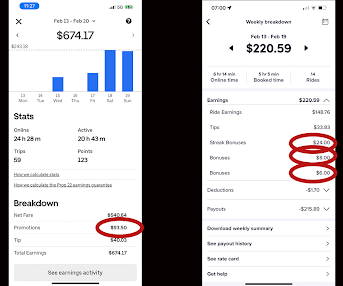
I made $895. Of that, $131, or 12%, was in the form of a bonus. I also earned $74, or 8%, in tips. Combined, bonuses and tips accounted for over $200.
I drove for approximately 29 hours. I’m deducting one hour, which accounts for the time when I had both Uber and Lyft running while waiting for a ride.
My earnings per hour are approximately $30. I would then take 90% of that to account for gas. That puts me at $27 per hour after gas expenses, my average weekend rate.
To achieve my weekend goal of $1,000, I would need to drive from 9 pm to 7 am on Friday and Saturday nights. With the extra bonuses, I could boost my hourly earnings to $35, taking ten hours daily. Or I can drive the way I drive now and make an easy $700.
Key Takeaways
Sometimes, I pick up former drivers who tell me they just couldn’t make more than $10 or $15 per hour driving. It doesn’t have to be that way.
By making a few strategic moves, you can greatly impact your earning potential.
The strategies in this guide will keep you in the green and position you as one of the top earners in your market.
While increasing your earnings with Uber is simple, it isn’t always easy. But if you keep putting in the hours, you’ll see your per-hour earnings increase week by week.
